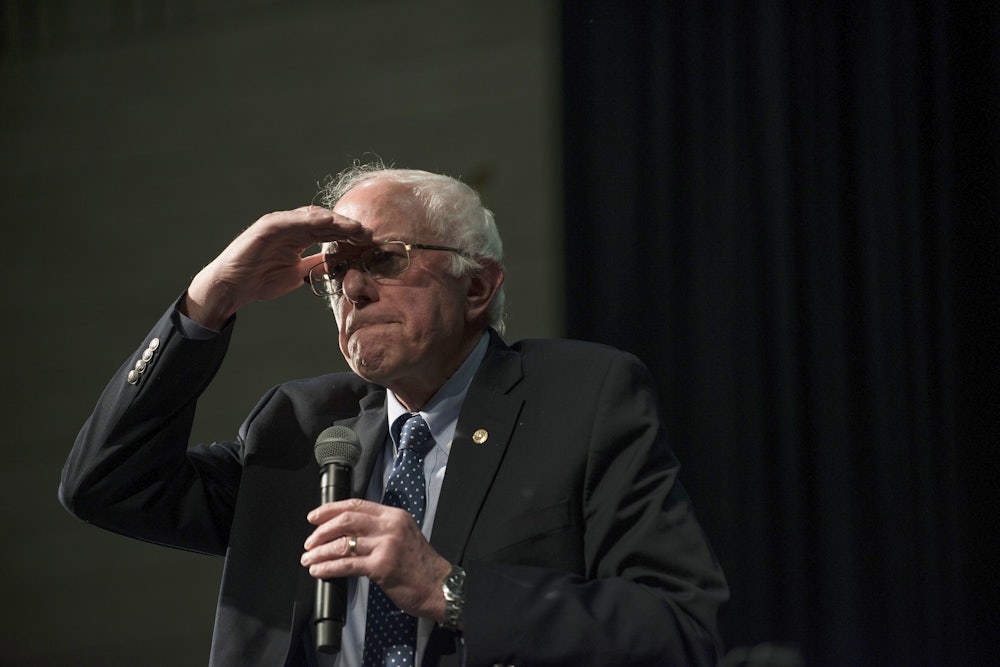“The wind is at our back,” Senator Bernie Sanders insisted in his concession speech in Nevada, after losing the state’s Democratic primary to Hillary Clinton by five points. “We have the momentum.” But he went on to lose South Carolina by almost 50 percentage points, and is trailing Clinton by half in polls of Georgia, Tennessee, and Texas. To prove that he really does have momentum, Sanders needs to win not just Vermont, Massachusetts, Colorado, and Minnesota on Super Tuesday. He also needs to win Oklahoma by a healthy margin.
The Sanders campaign has been paying extra attention to Oklahoma, spending $400,000 on ads there and making multiple stops in the state, ostensibly because, as Sanders told a crowd in Tulsa on February 24, “A victory here is a path to victory nationally.” That’s more rhetorical campaign fluff than truth. Oklahoma is not exactly a bellwether state for national voting trends, and its demographics are as favorable to Sanders as it gets: The state is 67 percent white, has a history of supporting socialist ideals, and this year independents can vote in the Democratic primary. A poor performance in Oklahoma would indicate that the foundation of Sanders’s support is eroding when it’s essential that it keep growing. Losing Oklahoma would suggest that Sanders’s campaign is doomed.
A victory shouldn’t be difficult. “It’s a cheap win,” explained Keith Gaddie, chair of the Department of Political Science at the University of Oklahoma. Compared to voters in Clinton’s Super Tuesday firewall of Alabama, Georgia, Texas, and Virginia, the state’s Democratic Party is much whiter. It has less than a third the number of non-white Democratic voters than those states, and the minority population in Oklahoma is mainly Hispanic and Native American, as opposed to African American. The Oklahoma Democratic Party decided to open up its primary to independents, and voter registration statistics show that independents make up about 30 percent of the total voters eligible to participate in the Democratic primary. That’s not an insignificant number, and, according to Gaddie, the last ten years have seen many young voters register as independents, giving Bernie another key demographic boost.
Even the more traditional Democratic voters in Oklahoma might be more naturally supportive of Sanders than the establishment in other states. Oklahoma has a Socialist history: At one point there were five Socialist state representatives, and when Socialist candidate Eugene Debs ran for president in the 1912 election, he won more votes in Oklahoma than any other state except Nevada. Those Socialist sympathies have been absorbed by the state’s Democratic Party, which “brought the labor movement into the party and infused party politics with a progressive impulse,” said Gaddie. Furthermore, Oklahomans have a natural distrust of big corporate structures. “People in Oklahoma don’t like big stuff,” he said. “They don’t like big banks, they don’t like big business. So when Sanders comes in beating the drum talking about breaking up the big banks, he gets a lot of attention.”
But recent polling shows that Sanders isn’t getting the amount of attention he needs in Oklahoma. A Monmouth University poll released Monday had him at 48 percent to Clinton’s 43 percent; with only 42 convention delegates to split between the candidates proportionally, a draw with Clinton would be a loss. Even though Sanders’s grassroots strategy depends on incremental victories, and on gradually convincing on-the-fence voters that they shouldn’t be afraid to vote for a more radical candidate, he’ll need larger strides to overcome his delegate deficit. And losing outright in a state as demographically perfect as Oklahoma would be devastating.
